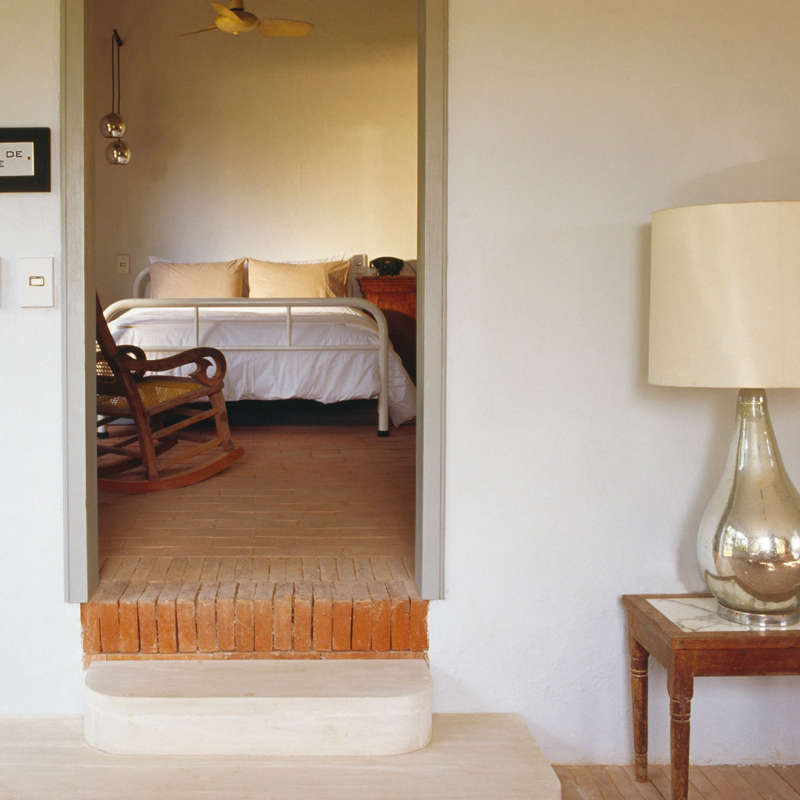A feng shui master who hails from North Carolina, Katherine Anne Lewis studied under three grand masters and has had her LA-based global consultancy for more than a decade, specializing in the intersection of feng shui, design, and well-being. Feng shui, Lewis explains, is the 4,000-year-old Chinese art of placement, aimed at creating rooms that impart harmony and balance, and, in turn, health, love, and wealth. “Today feng shui is such a highly regarded practice that nearly all homes, buildings, and gardens in China have been feng shuied,” she says.
Lewis’s clients include LA shopping hub The Grove, which she worked on from inception to finish–”it has more foot traffic than Disneyland”–and our friend Shiva Rose of the Local Rose, an actress and healthy lifestyle blogger, who enlisted Lewis’s help with her furniture arrangements. All manner of restless sleepers and insomniacs have also called upon Lewis for guidance. “Your bedroom ought to be a place you love being in–and not a catchall storage place,” she says. “Regardless of the size and shape of your room, what you see should make you happy.” Toward that end, Lewis explained these five feng shui basic principles for a better night’s rest.
1. Have nothing under your bed.

Above: Arranged in consultation with a feng shui master, Michelle McKenna’s serene London bedroom has an all-clear space under and surrounding her bed. Go to The Power of Pastels to see more. Photograph by Emma Lee for Remodelista.
“Luggage, tax returns, winter clothes. All of it creates blocks that prevent you from feeling grounded (and that also keep your mind busy). For optimal sleep, clear it all out, so that the chi, energy, can flow evenly all night.
“Similarly, keep the piles on your floor to a minimum. Things on the floor are dams; you want the river to be able to move easily. So free your room of stressors, such as laundry that needs folding. And if you’re only using your exercise equipment as a clothes rack, move it out.”
2. Move your bed away from the wall.

Above: Well placed–this alcove bed at the Hotel Henriette in Paris has just enough room for wall space on each side and two bedside tables.
“I realize in small quarters this can be tricky, but a bed with access to only one side blocks energy from coming in. The bed heals the body at night, and when you push your mattress against a wall, you’re keeping out new opportunities. The same goes for bedside tables–even if you’re single or have the tiniest space, you should have some sort of table on each side of the bed to keep channels open to receive love. As for lighting, that’s a case of individual preference, but, yes, each side should have a light; symmetry, while not essential, is also nice.” (For advice, see Remodeling 101: Bedroom Lighting Secrets.)
3. Surround yourself with restful colors.

Above L and R: Shiva Rose‘s bedroom in the Santa Monica Mountains received the Lewis treatment, which included introducing a soft palette, shifting the antique vanity so the mirror is directed away from the bed, and using a rose-colored base sheet “to bring in passion.” Photograph by Ulrica Wihlborg via Sweden with Love.
“Stay away from big fields of reds, oranges, and bold pinks because those are active colors that energize the body and make it hard to fall asleep. Whites, creams, pastels, grays, silvers, and soothing yellows, greens, and blues are a better choice. Patterns and stripes are also okay as are hints of strong colors. The bottom line is your bedroom should feel like an oasis, so you should choose colors that speak to you.”
4. Remove mirrors or cover them up at night.

Above: A mirror can visually enlarge a small room, but it also can have a depleting effect when positioned near a bed. In architect Elizabeth Roberts‘ Brooklyn bedroom, shown here, Lewis would recommend draping fabric over the mirror next to the mantel during sleeping hours. Go to House Call to see more.
“Mirrors that face you while you’re in bed pull energy away from you–making it hard for you to fully reap the benefits of sleep. The solution? Either reposition the mirror or cover it up with fabric at night.”
5. Banish electronics

Above: In this restful bedroom at Fontevraud Abbey, a Loire Valley landmark newly converted into a hotel, the bedside table is equipped with an outlet–but Lewis advises placing your phone and charger elsewhere at bedtime.
“Electronics stimulate the brain. Having them in the bedroom as you’re going to sleep keeps the mind activated. Instead, store your gadgets in another room. But if you have to have your phone with you–for example, you’re a doctor who’s on call–move the port so it isn’t right next to your head. The floor is a better alternative. The same, of course, goes for computers. The eventual goal is to move them out of your bedroom at night for peace of mind and body.
“As for the TV, it, too, should be banished from the bedroom, but a lot of my clients say they’ll do everything but that. I’m OK with that; I want you to be happy in your bedroom. But having artwork and photos on the walls is the calmer way to go: When you open your eyes, you should see something that lifts your spirit rather than dampens it.”
Read more about feng shui at Katherine Anne Lewis’s site, Harmony and Balance.
For more sleep remedies, see:
- How to Achieve Total Darkness in the Bedroom (and Why It Matters)
- Jackie Ashton’s 10 Secrets for a Better Night’s Sleep
- Remodeling 101: Bedroom Lighting Secrets




Have a Question or Comment About This Post?
Join the conversation (1)